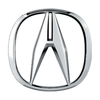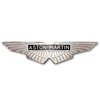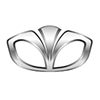15 tips for driving safely in snow
Driving in winter especially during snowing can be very dangerous if you don’t know what precautions should be followed. This guide will tell you the best tips that you should follow if you decided to take your vehicle for a drive in such bad weather.
1. Driving in Bad Weather Must Be a Necessity:
Before going on the road in bad weather, think well and see if your appointment can be postponed. Avoiding driving in bad weather is the piece of advice that you will read or hear from everyone. Choose between your appointments or your safety and of course it is better to choose your safety. Explain why you will postpone your appointment to whoever you are going to meet and I guarantee to you that they will understand.
2. If You Decided to Drive, Be Prepared:
Now if you decided to ignore our first tip or if it is an urgent appointment or an emergency, perhaps you should consider this tip and be prepared to any kind of circumstances.
The following list of equipment and supplies must be taken.
- Food and water.
- Warm clothes.
- Blankets.
- A tow rope.
- Torches with good batteries.
- A first aid kit.
- Mobile phones with fully-charged batteries.
- Jump leads.
- A shovel.
- An ice scraper.
- Sand or cat litter.
Before leaving, watch the news, listen to the radio or read the newspaper and check the condition of the weather. You will know information like how bad the weather outside your house, the safest roads and emergency numbers.
Taking shortcuts is extremely dangerous so stay on the main roads; they are the safest since they are cleared regularly in case it is snowing and if something happened, you may find people to help you.
Remember to check on your tank fuel level. The tank must be full because the fuel performs additional tasks during the cold weather such as keeping the engine warm.
Check the exhaust pipe and clean it regularly. Also notice that CO accumulates in the vehicle which is fatal.
3. The Tires Integrity:
First of all, it is better if you bought the tires designed specifically for bad weather conditions such as snowing. They are not additional money that can be avoided; they are necessary for us to survive the winter safely.
Before leaving, check the integrity of the tires. Do you remember the car’s user manual guide that you have in your car? It is now important. This guide will include the recommended pressures. These pressures differ so following the guide’s numbers is better that the opinions of anyone else.
You should check the depth of the tread of the tires too. There are two tread depths that you can adjust your tires according to them.
- The legal number is 1.6 mm.
- Experts recommended number is 3 mm. Tests done proved that the stopping distances decrease when the tread wears down.
4. The Vehicle’s Fluids:
When there is a significant reduction in the temperature, water freezes; we all know this fact. Both the vehicle coolant and the windscreen have anti-freeze components.
In such cold weather, you may have to check the oil and top it up; here is how you can do it.
You will need these things.- A pair of gloves to keep your hands as clean as they are.
- Washing detergent to clean your hands.
- A clean towel to clean the dipstick with it.
- The engine oil.
- A funnel to put the oil into your vehicle.
- Choose an area that has a flat ground and park your vehicle there.
- Wait about 15 minutes to allow the oil to settle into the reservoir. Now you are ready to check its level.
- The vehicle’s bonnet differs from vehicle to another so check your vehicle’s manual guide to know how to do this step.
- In order to be able to locate the dipstick of the vehicle, you need to make the handle brightly colored. Check your vehicle’s manual guide to know how to do this step.
- Now, you should be able to remove the dipstick and clean it well with the towel.
- Put the dipstick in place, wait for about 5 minutes, and then take it out. Now you can read the oil’s level.
Follow the following steps to be able to check the fluids of the vehicle.
That was how to check the level of the oil. Now let’s know more about topping up.
- You perform topping up after checking your oil level and finding out that it is at its lowest or that there is no oil at all. Check the following steps to know how to top up your vehicle.
- When you open your engine, you will find the word ’OIL’ marking the oil filler cap.
- Use the funnel to fill your tank with oil. It is better to put small amounts of oil then checking the level regularly until the tank is full.
Please note that topping up is not a good thing to do so if your vehicle needs to be topped up regularly, let a mechanic check it.
5. The Car in Front of You:
Driving on snow makes the vehicle take longer time than usual to stop; that is why the distance between your vehicle and the vehicle in front of you should be longer than usual to have the proper time and enough distance to stop if the vehicle in front of you stopped suddenly.
It is a must to teach the drivers in the areas where it snows regularly this tip to be able to save their lives and the lives of the other people on the road. Remember these training skills to face this situation before going on the road.
If it has been a while since your training, just remember the most important tip which is the ’20 Seconds Role’. 20 seconds are enough time to stop your vehicle safely if anything happened to the vehicle in front of you. Estimate the 20 seconds distance by any things on the road such as a tree or a light column.
6. Idling is wrong:
Idling is not the proper thing to do to defrost your vehicle because of the following reasons.- It is illegal and the fine ranges from £40 to £100.
- Letting your vehicle running and leaving it will expose it to the danger of theft. The thief will just drive it away. How easy!
- If your vehicle was stolen while idling, the insurance company will consider it your mistake and will not pay you anything.
7. Check the Battery and the Heater of Your Car:
Both the extremes of weather are not good for your vehicle. The hot weather dries out the fluid of the battery; that is why the risk of dead battery increases in the summer. The cold weather thickens the oil of the engine up; that is why the vehicle needs more energy to start in the winter. Check your battery once a while. Your mechanic will check it without any charges in minutes.
Also, it is better if you took your vehicle for a long drive once a while. This will give your battery some time to charge up. Short drives are not as good as long ones in keeping your battery warm.
The car heater keeps the driver and the passengers warm during driving in cold conditions. It also clears the mist out of the inside of the vehicle’s windows.
All the vehicles have rear heated screens and some modern vehicles have front and rear heated screens. Check your manual guide to know the best ways to aim the warm air towards the inside of the windows in order to keep a clear visibility to the road.
8. Clear the Windscreen:
Any obstacles that interfere with your vision should be removed. It is illegal to drive with such obstacles. Also, these obstacles may endanger your life because they will not allow you to see the road clearly while driving. Snow is one of these obstacles that cover the windows. It should be cleared out of the windows along with the condensations on the inside of the windows of the vehicle too.
Notice that your visibility does not depend only on the windows. You should consider clearing the lights, door mirrors, indicators, rear & front parking cameras, reflectors, number plates and any other part that help you to have a clear vision of the road.
Using hot water to clean any part is wrong. Hot water cracks items during the winter because they contract due to the cold weather then suddenly expand.
Clean using a de-icing fluid or a scraper.Also, if there is any snow on the car’s roof, clean it before going on the road. Driving with snow on the roof of the vehicle is dangerous because it may fall in front of the vehicle behind you causing accidents.
9. The Headlights:
Don’t depend on the fact that the headlights are on and check on them. The headlights make the drivers see the road well and allow the other vehicles to notice you.
Also, check on the headlamps.In snowy weather or even just cloudy weather, the headlights and the headlamps are necessities.
10. What Lights Should Be Used and When?
Fog lambs are important on the road and provide the drivers with clear vision but they also may cause problems.
- The rear fog lambs cause a problem to the drivers on the road. They dazzle the drivers on the road when the snow melts and begin to turn into spray. This spray comes out of the vehicle’s rear so they should be used only when you really need them.
- The front fog lambs also cause problems to the drivers especially those in front of you. Their light may be reflected by the snow dazzling the other drivers.
Legally, the fog lamps should be used only when your visibility is less than 100 metres but this law is so difficult to be applied so there is a certain code between the drivers.
The code is that you can use the fog lamps if you are unable to see the tail of the vehicle in front of you. Remember that this vehicle should be 20 seconds away from you.
- The headlamps should be used only when necessary especially if there is snow on the road.
Determination of which light should be used may seem difficult. If you are unable to determine, just put yourself in the position of the other drivers and ask yourself how your lights may affect the other drivers on the road.
11. Drive smoothly and gently:
If you are not good at driving or if your style of driving is crazy, it is better to stay at home.
But what if you have to go on the road? You know need to drive as smooth and gentle as you can. Remember all the precautions, don’t rush, drive slowly and have full control over everything.
The following tips should be remembered well if you drive a manual vehicle.

























































